Beef Teriyaki on Rice Bowls
As an Amazon Associate and member of other affiliate programs, I earn from qualifying purchases.
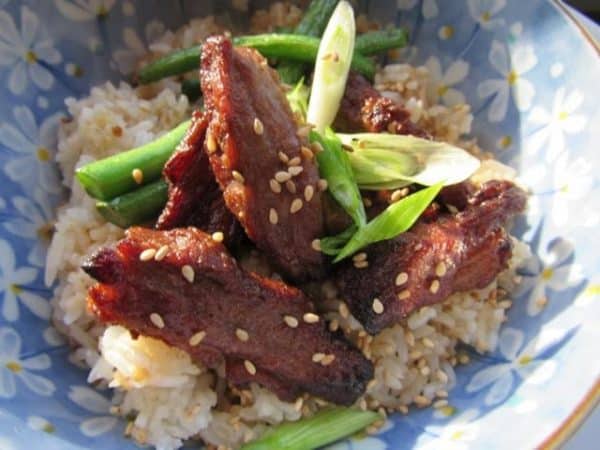
Mothers have been using bowls as food containers for centuries. In fact internet sources revealed that in the history of China, “long before the Neolithic Age” people used bowls to hold food. China bowls were used in the Shang Dynasty (1600-1100 B.C.) and even earlier in 475 B.C. China bowls ranged from primitive celadon chinaware to earthen clay bowls.
To this day, the use of bowls for food has remained diverse, versatile and useful. Generations before us have been using it for eating and drinking ever since China used bowls for rice, soup and tea.
Back in the Philippines, when my mom used to feed my little sister who was such a picky eater as a toddler, I saw food mom prepared: soups, noodles and rice in bowls. Then she would sprinkle cut-up or shredded meat and vegetables on top of the rice or noodles. This was how my baby sister slowly started to eat without throwing a fit or a tantrum at the dinner table.
When I became a mother, I remembered what mom used to do. So I fed my little boys then, food in bowls. The variety changed daily depending on what meals I cooked. But rice has always been a staple in Filipino food so, that was at the base of the bowl. My youngest son liked boiled chicken on rice, made soft and mushy with chicken broth. My older son preferred stronger flavors of beef, so I had a base of mashed sweet potatoes, topped with burger beef which he enjoyed so much as a toddler, he would toss his empty bowl with glee once he was done eating.
Today, there are more adults at our family table and no more toddlers. But I still serve “rice, vegetables and meat” in bowls often. This is what I did when I cooked this Beef Teriyaki on Rice. Serving food in a bowl has so many advantages: it is spill proof, you have portion control right there, it is a versatile receptacle for just about anything – from appetizers, sides, entrees to desserts. And sometimes, if we eat meals at different times of the day, then the food-in-a-bowl serving works, too. What’s your favorite food in a bowl? Do share. I’d love to hear bowlfuls of food stories!
Beef Teriyaki on Rice Bowls
Ingredients
- 4 cups boiled rice white or brown,or enough to fill 4 bowls of 6 oz. each
- 1/2 pound beef tenderloin, sirloin or skirt steak sliced in 2-inch long strips
- 2 Tablespoons cornstarch to coat beef
- 1/2 cup roasted sesame seeds optional (from Asian markets)
- 2 Tablespoons vegetable oil
- 2 cloves garlic peeled, minced
- 1 knob, a Tablespoon fresh ginger peeled, sliced in thin strips
- 1 medium-sized white onion sliced
- 1/3 cup soy sauce for teriyaki sauce
- 2 Tablespoons organic honey for sauce
- 1/2 cup ginger ale for sauce
- 1 Tablespoon brown sugar
- 1/2 teaspoon sea salt
- 1 teaspoon freshly ground black pepper
- 1/8 teaspoon sesame oil optional
- 2 stalks scallions or green onions chopped, for garnish (optional)
Instructions
- Cook rice in a rice cooker and put aside. Or if preferred, cook rice stove top. Recipe follows.
- How to cook rice stove top: wash 2 cups uncooked white rice grains twice. Drain water. In a medium stock pot, combine 2 cups rice grains with 3 1/2 cups water. Bring to a boil over high heat, covered. Then lower heat to a low simmer. Cover and continue cooking for 20 minutes more till water evaporates and rice grains are soft and fluffy. Turn off heat and set aside. This yields 4 cups of cooked rice. (Note: cooking time for brown rice is longer than for white rice.)
- How to cook the beef: Coat beef slices with cornstarch. Set aside.In a large wok or skillet, over medium high heat, add oil. When oil is hot enough in one minute, stir fry garlic, ginger, onions for 1 to 2 minutes.Add beef slices to skillet. Mix ingredients together. Beef strips will cook in about 8 to 10 minutes and will turn from pink to brown, with a shiny glaze. Remove beef from skillet and set aside in a covered platter.Mix in a medium bowl the teriyaki sauce ingredients: soy sauce, honey, ginger ale, sugar, salt and black pepper.
- Pour this sauce mixture into the same skillet used for beef. Over medium high heat bring the sauce to a boil. Lower heat to a simmer and continue cooking sauce till it reduces to a thick liquid in about 5 minutes.Return the cooked beef strips to the sauce in the skillet. Add the sesame oil and blend well. Pour the roasted sesame seeds and mix well so they spread evenly.To assemble in bowls: in each bowl place about one cup of cooked rice. Over the mound of rice, pour 1/2 cup of cooked beef with sauce, enough to make rice have a golden brown hue. Garnish with a tablespoon of scallions. Repeat for the other bowls the same amount of beef and rice. Serve warm.Cook's comments: serving this dish in individual bowls is convenient. There is less clean up and there will be portion control for all. If there are leftovers, cover bowl and refrigerate. Microwave bowl with beef and rice for one minute when ready to eat again.
- Recipe notes: some bottled sesame seeds are sold roasted. If not, place this amount of sesame seeds in a small non-stick skillet. Over medium high heat, roast sesame seeds for 2 to 4 minutes till a fragrant aroma is emitted. Turn off heat and remove sesame seeds. Set aside till ready to mix in the beef and sauce.
- Hello, Friends! All the images and content on this blog are COPYRIGHT PROTECTED and owned by my media company Besa-Quirino LLC. This means BY LAW you are NOT allowed to copy, scrape, lift, frame, plagiarize or use my photos and recipe content I wrote, on your website without my permission. If you want to republish this recipe or content on another website or news article, please ASK my permission, re-write it in your own words and simply link back to this blog to give proper attribution. It’s the legal thing to do. Thank you. Email me at [email protected]
Nutrition
Notes on Nutrition: The nutrition information is an estimate and will vary based on cooking methods and brands of ingredients used.
Did you like this recipe? I have more classic recipes inspired by my late mother’s cooking in my popular cookbook: My Mother’s Philippine Recipes. If you’re learning how to cook Filipino food or a fan of Philippine cuisine, buy my cookbooks and books on Amazon.com sold worldwide in paperback and Kindle format.

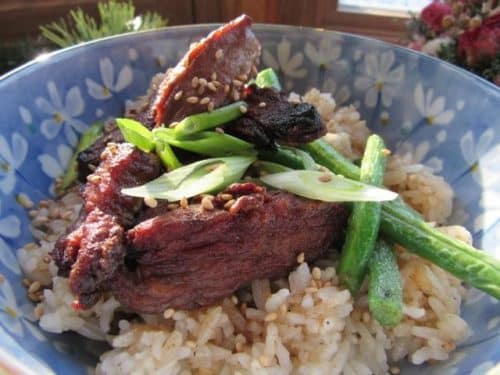
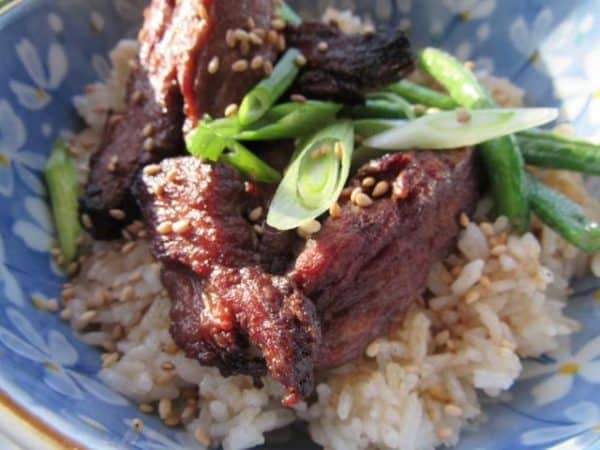
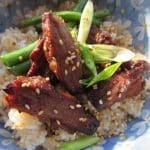
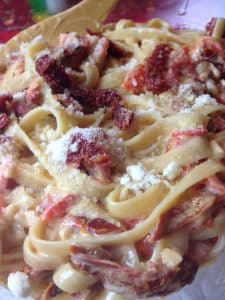

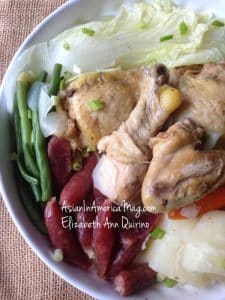
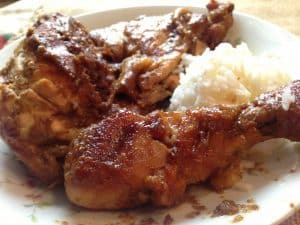

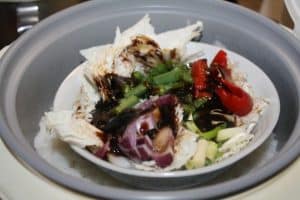
Thank you Betty, I had no idea that is what teriyaki meant. Then there’s cooking with ginger ale.. Really informative and just as flavorful too!
Thanks, Sophie. Enjoy this recipe 🙂